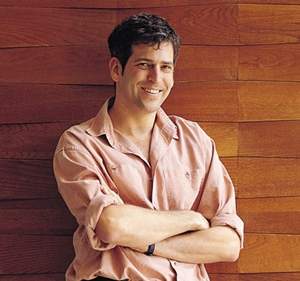Are you a journalist? Please sign up here for our press releases
Subscribe to our monthly newsletter:

Digital technology may well be the most significant advance of our time. But, as a team of scientists at the Weizmann Institute has shown, computers and DVD players have nothing on living cells, which have their own built-in digital systems.
Dr. Uri Alon, of the Molecular Cell Biology and Physics of Complex Systems Departments, along with team members Dr. Galit Lahav Shenhar, Nitzan Rosenfeld, Alex Sigal and Naama Geva-Zatorsky, discovered the phenomenon while investigating what is possibly the most researched protein ever - the tumor suppressor p53. Produced in the cell when DNA is damaged, p53 plays a role both in DNA repair and in a “self-destruct” command that switches on in the cell when damage is too great, preventing it from turning cancerous.
Probing the life cycle of this useful protein, the team saw, to their surprise, that p53 appears and disappears in regular, identical peaks, or pulses. This rhythmic pattern was completely at odds with previous findings suggesting that p53 is churned out in ever-increasing amounts as more damage is inflicted on the DNA. Each pulse recorded by the team involved the same amount of the protein and lasted for the same length of time (approximately five hours). When the amount of damage to DNA was increased, additional pulses ensued, but the size and duration of each remained stable. These pulses are like the tiny bits of information on a digital compact disk, which encodes sound using only two discrete possibilities: on or off. This is in contrast to analog-based technologies, which use the physical aspects of material to represent information, depicting it as changing continuously over time and space - similar to the grooves in a phonograph record, whose variations in depth generate ascending and descending tones.
“Digital technology has clear advantages over analog-based devices, in that it stands up well to a certain amount of noise and component imperfection, and is easier to manipulate. The cell may have evolved digital methods for similar reasons,” says Alon.
How did Alon and his team manage to observe this phenomenon, which literally thousands of others had missed? The answer lies in their non-conventional approach. Almost all previous studies of the dynamics of proteins like p53 have been done on material extracted from a large number of cells. Such studies give an average result over an entire cell population. In contrast, the Weizmann team decided to go after specific proteins in their natural setting, inside the walls of individual cells.
To accomplish this feat they applied a recent advance in genetic engineering, in which a segment of a jellyfish gene that encodes for bright fluorescent colors is inserted into the gene for the protein studied, thereby producing glowing protein molecules that can be easily distinguished under the microscope.
The p53 protein was colored with a cyan fluorescing marker, and MDM2 - another protein, responsible for dismantling p53 - was marked with yellow.
“The time-lapse sequence looked like a traffic light, with lights shining cyan, then yellow, then cyan. There was no mistaking that we were seeing something out of the ordinary,” says Alon.
Alon and his group plan to continue researching p53 and MDM2 in single cells, as they believe that the method may provide answers to some long-standing questions, such as how p53 mediates the switch from repair to suicide mode. Their findings are also important for others studying protein dynamics: “If we found one digital system, it’s likely there are others. We showed there are some phenomena that can be seen only by looking inside individual living cells,” says Alon.
Dr. Galit Lahav Shenhar, who created and led this project, was in charge of collecting the data using the fluorescence microscope. Because the cellular processes studied are relatively slow, the research required repeated 16-hour vigils, with cell photos taken every 15 minutes. “At that time, the system had to be refocused for each frame.
My lab partners were very supportive,” says Lahav. “Even my boyfriend (now husband), who is not a biologist, learned to work the microscope so I could get a few hours rest in the afternoon and come back to work until two or three in the morning. It was monotonous work, but the excitement of what we had discovered spurred me on. We might have thought our method was flawed, since the results were so unexpected, but Uri taught us to trust what we see, not what we expect to see.” The team now has a fully automated microscope, developed by Prof. Zvi Kam of the Molecular Cell Biology Department and computer scientist Yuvalal Liron, making the new generation of experiments much easier to perform.
Dr. Alon’s research is supported by the Charpak-Vered Visiting Fellowship, Canada; the Clore Center for Biological Physics; the Yad Abraham Research Center for Cancer Diagnostics and Therapy; the Estate of Ernst and Anni Deutsch, Lichtenstein; the Leon and Gina Fromer Philanthropic Fund; the Minerva Stiftung Gesellschaft fuer die Forschung m.b.H.; the James and Ilene Nathan Charitable Directed Fund; the Harry M. Ringel Memorial Foundation and Mr. and Mrs. Mordechai Segal, Israel .